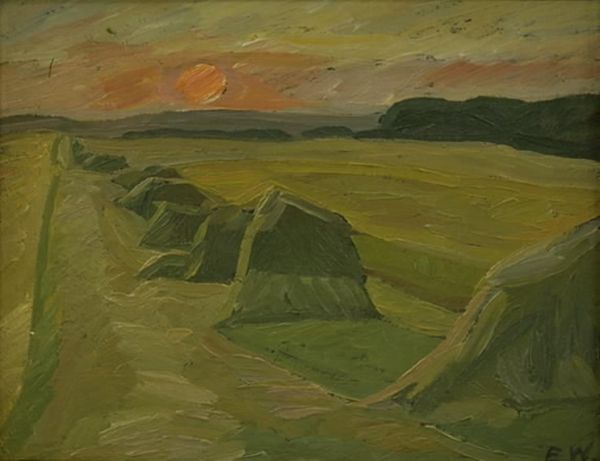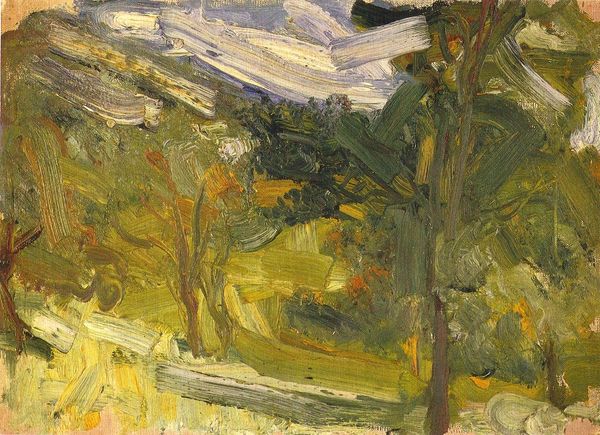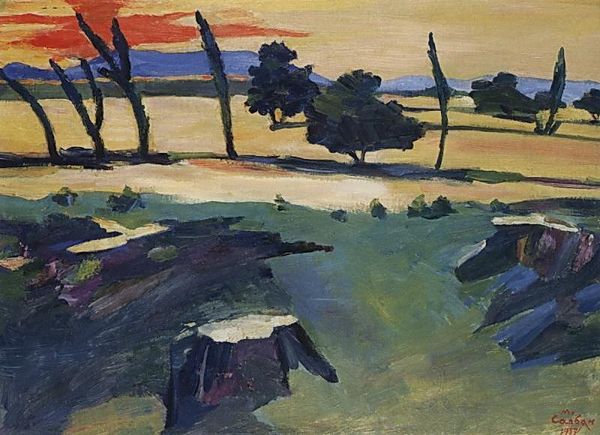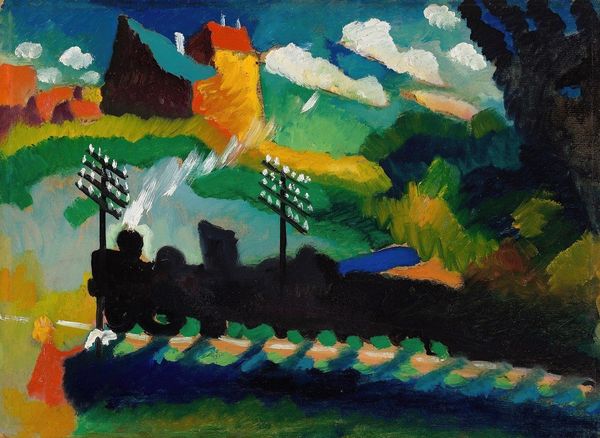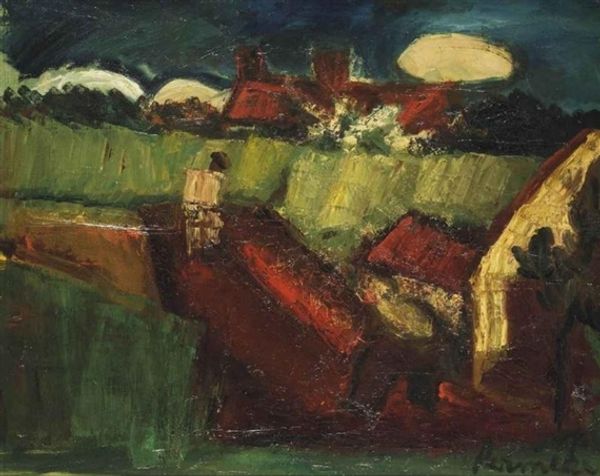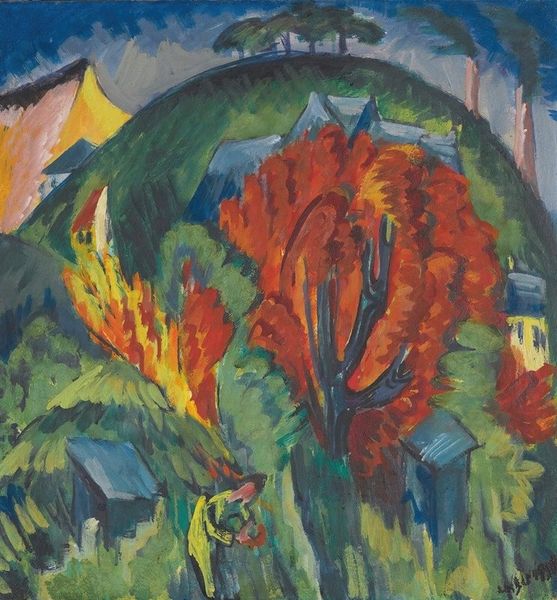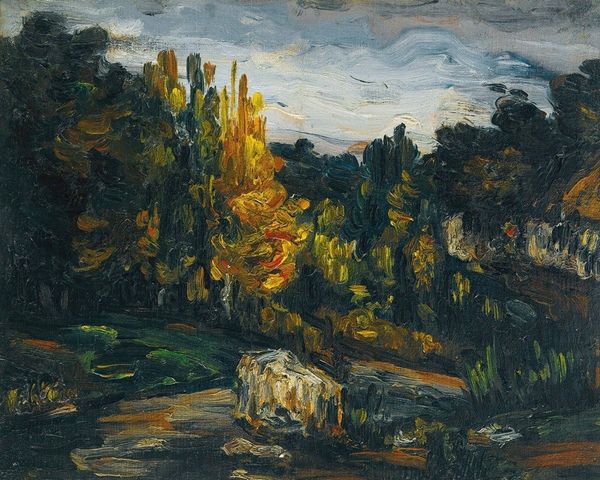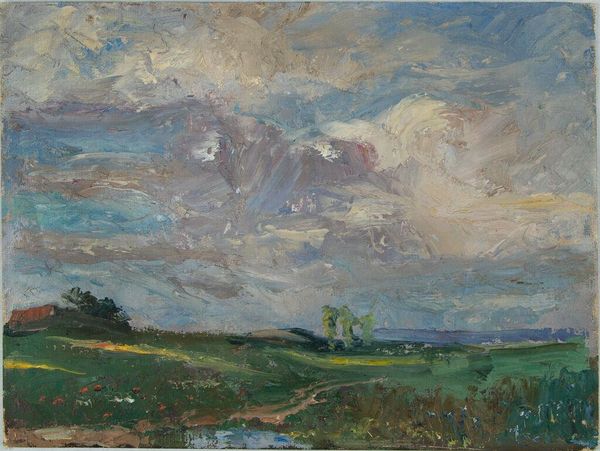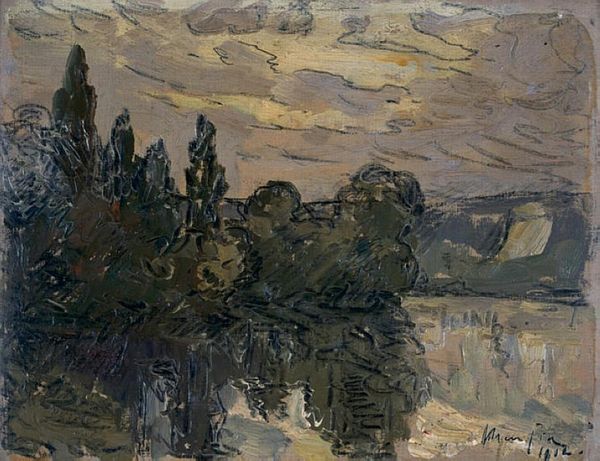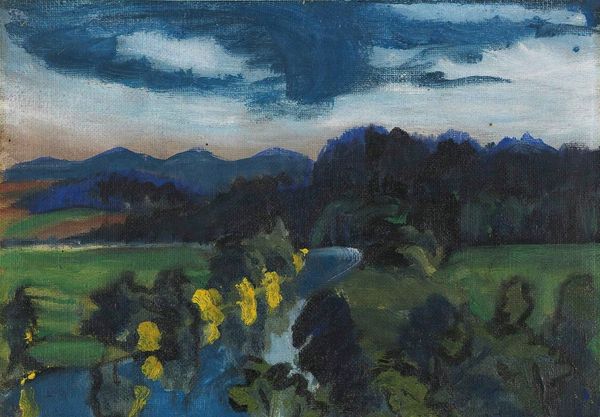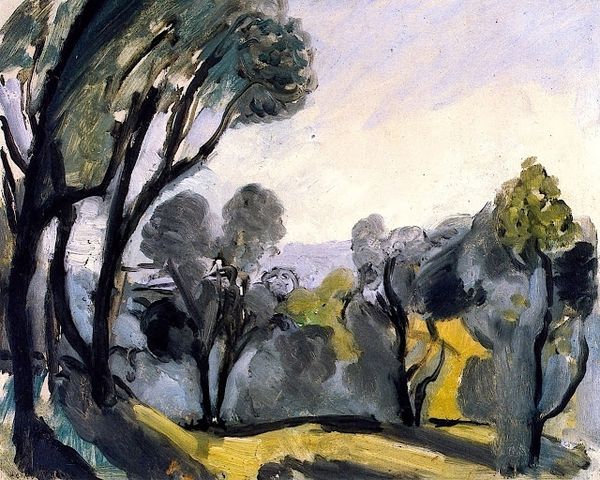
matter-painting, painting, plein-air, oil-paint
#
fauvism
#
matter-painting
#
painting
#
impressionist painting style
#
plein-air
#
oil-paint
#
landscape
#
impressionist landscape
#
oil painting
#
expressionism
Copyright: Constant Permeke,Fair Use
Curator: There's something quite arresting about this artwork. Constant Permeke's, “Farmhouses in a Sunny Landscape” offers us a glimpse into the material conditions of rural life. Editor: It strikes me as immediately unsettling, despite the title. The heavy, dark strokes and near-monochromatic palette feel oppressive, not sunny at all. Curator: Yes, that darkness is very intentional. Permeke’s visible brushwork and thick application of oil paint--what some would term "matter-painting"--create a tactile surface. It highlights the sheer labor involved in producing both the image and perhaps echoes the labor in the scene itself. Note the figure seemingly pushing a wheelbarrow, barely discernible amid the foliage. Editor: It does make me wonder about the social context in which Permeke created this. Was this painted during or after the First World War? What exhibitions or institutions shaped its reception, and how would people have seen a scene of rural life then? The somewhat grotesque exaggeration pushes beyond traditional landscape. Curator: Precisely. He wasn't simply depicting scenery, but actively constructing a commentary on the elemental relationship between humanity and the land. There's also a certain reverence. Even the Fauvist use of non-naturalistic color emphasizes that connection. Editor: But doesn’t the simplification verge on idealization? The artist flattens the forms, diminishing the specifics of the figures, trees, the very homes themselves, suggesting that a universal, or perhaps ideological statement is what is primary to the artist. What was his audience at the time expected to bring? What would the galleries presenting his work emphasize? Curator: It’s true that simplification carries a weight. Perhaps, considering his involvement with Expressionism, this is more about conveying an internal, emotional state—a psychological landscape, rendered through his engagement with oil and canvas. The materiality becomes the message. Editor: A message framed within the social narratives of the era. By engaging with art in a public way— through exhibitions and critique--did viewers challenge or validate the narrative on labor presented by Permeke? That public consumption completes the artistic labor. Curator: I find myself pondering now the weight of the paint and the weight of life blending within the frame. Editor: And I consider how Permeke's decisions fit, challenged, or perhaps ignored the dominant political messages presented at that historical moment.
Comments
No comments
Be the first to comment and join the conversation on the ultimate creative platform.


